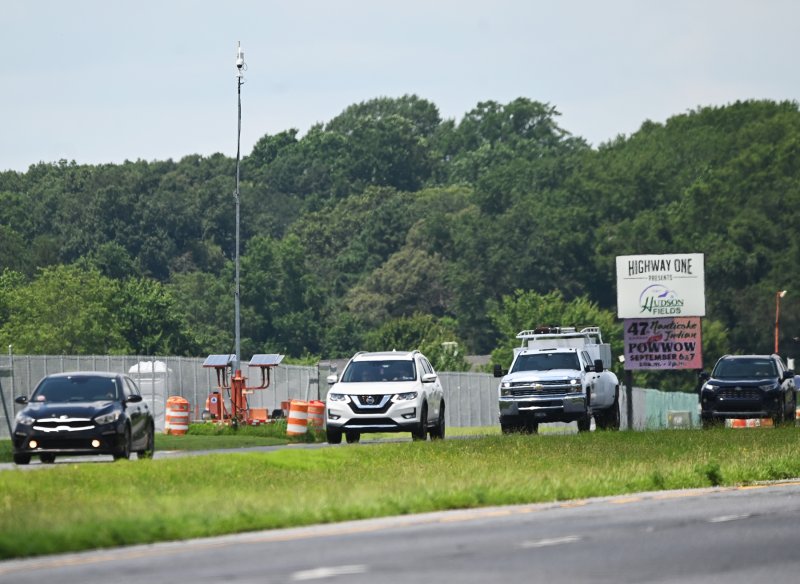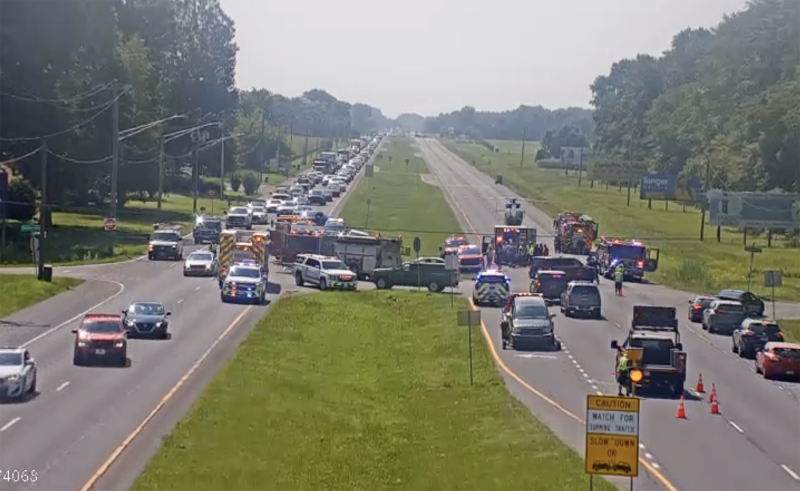Temporary traffic cameras have popped up along Route 1 north of Lewes, providing the Delaware Department of Transportation and the public with new views of what’s happening on the Cape Region’s busiest road.
“The department deploys temporary traffic camera trailers as a flexible, rapid-response solution to monitoring traffic conditions, supporting incident management and enhancing work zone safety,” said Charles “CR” McLeod, DelDOT community relations director.
The latest temporary cameras have been placed near the intersection of Route 1 with Hudson Road and Steamboat Landing Road, as well as near the intersection of Route 1 with Oyster Rocks Road and Eagle Crest Road.
There are a variety of reasons for why DelDOT uses temporary cameras, including work zone monitoring, incident management, special events, coverage gaps, data collection and analysis, and emergency response.
In terms of data collection and analysis, DelDOT uses the cameras to collect traffic volume information, and monitor turning movements and queue length data to be used in studies, signal timing evaluations, and analysis of conditions before and after improvements.
“Temporary traffic camera trailers give DelDOT eyes on the road where and when they're needed most,” McLeod said. “Their mobility, quick deployment and independence from fixed infrastructure make them a vital tool for real-time operations, emergency response and data-driven planning in both urban and rural environments.”
McLeod said the department owns and maintains 18 portable camera trailers and currently has six operational and deployed in the field. The others are being prepared for deployment with the upcoming NASCAR and Delaware State Fair operations.
Most camera deployments are temporary and only last a few weeks, but some, like the one at Hudson Road, will be in place until a permanent camera is operational. McLeod said the reason for placing the camera near Hudson Road is to allow monitoring of traffic flow following the opening of the Route 1 southbound bridge at Route 16.
Most temporary cameras are solar-powered with a battery backup. They rely on cellular modems, satellite links or radio networks to transmit live video to the state’s Transportation Management Center.
Video feeds are streamed via the Advanced Traffic Management System and made available for decision-making and incident response coordination, McLeod said.
In addition to temporary cameras, the state has more than 75 permanent traffic cameras in place throughout Sussex County. To view live camera feeds, go to deldot.gov/map.
Nick Roth is the news editor. He has been with the Cape Gazette since 2012, previously covering town beats in Milton and Lewes. In addition to serving on the editorial board and handling page layout, Nick is responsible for the weekly Delaware History in Photographs feature and enjoys writing stories about the Cape Region’s history. Prior to the Cape Gazette, Nick worked for the Delmarva Media Group, including the Delaware Wave, Delaware Coast Press and Salisbury Daily Times. He also contributed to The News Journal. Originally from Boyertown, Pa., Nick attended Shippensburg University in central Pennsylvania, graduating in 2007 with a bachelor’s degree in journalism. He’s won several MDDC awards during his career for both writing and photography. In his free time, he enjoys golfing, going to the beach with his family and cheering for Philadelphia sports teams.
























































